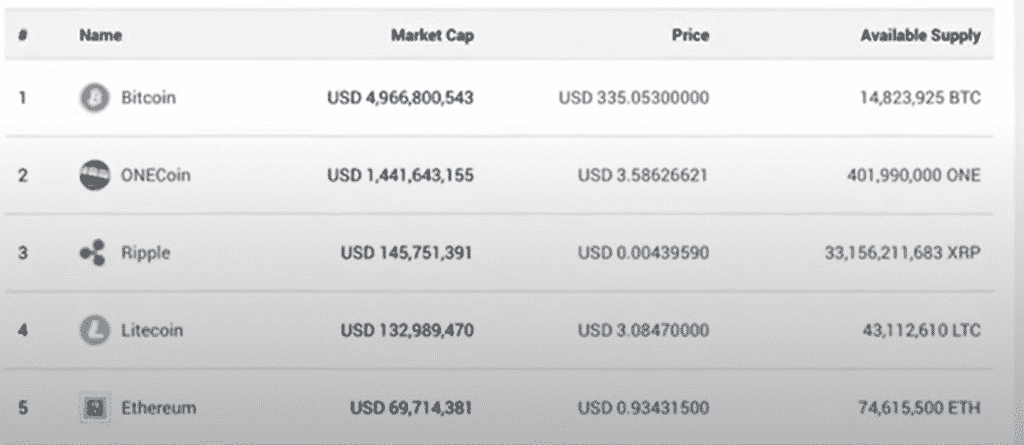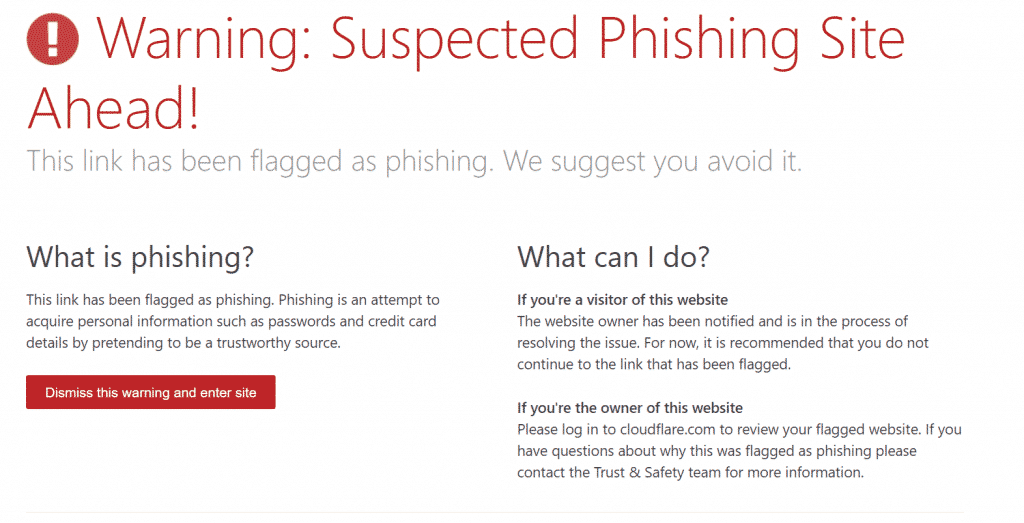The OneCoin Scam
Last Updated on 17 October 2020 by CryptoTips.eu
In the era of cryptocurrency, one hallmark of a crypto platform is the presence of a blockchain where mining and trading of digital assets happens.
When OneCoin – a Bulgarian corporation – emerged in 2014 with a network selling structure, the crypto arena was on the brink of the most notorious Ponzi schemes in the history of virtual money. The advocates of the plan asserted that it would grow swiftly to be the future Bitcoin! The OneCoin project was a scheme of illusory currency without products nor memberships.
Around 2015, experts familiar with MLM structures and cryptocurrency networks started smelling the coffee. They were alarmed by OneCoin’s operations – a purported cryptocurrency company – that mirrored those of a typical multi-level marketing company, but coupled with the absence of a distributed ledger.
The OneCoin Promoters
There are some key players within the OneCoin scam.
Dr. Ruja Ignatova
Bulgarian-born Ruja Ignatova established the OneCoin scheme in 2014. This new start came just two years after being convicted of fraud after a company, co-owned with her father, in Germany was pronounced bankrupt under strange circumstances. She combined efforts with Konstantin Ignatov and one Mr. Greenwood.
Dr. Ignatova has a suspicious LinkedIn profile with only 252 connections considering her lofty claims.
Her most recent title is Chief Operations Officer of OneCoin Ltd. Surprisingly, the page lacks a display photo and has no single contact detail. It’s odd to have the alleged cryptocurrency company, appear on her LinkedIn profile, but not hyperlinked to any corporate website.
Moreover, one of her interest groups is dubbed “scams and frauds,” with only 167 members. Though her intentions remain mysterious, they indeed send some messages.
Her vague assertions include 2012’s Bulgaria’s Businesswoman of the year. On scrutiny, no award contest goes by that name. She claims to be a cryptocurrency consultant with a book under her name though the claim has no proof.
Ruja has a doctorate in Law from the University of Konstanz and a bachelor’s degree in Law and Economics from Oxford University. Let’s assume that the educational qualifications she has shared are valid. In that case, they must have given her an invaluable head start into financial fraud.
BigCoin
A shocking revelation from a leaked video debunks her claims that she never took part in MLM before OneCoin. In the 2014 video where she is addressing prospective investors in Hong Kong, there’s evidence that she was part and parcel of the BigCoin pyramid selling scam. BigCoin claimed superiority to bitcoin. BigCoin and OneCoin have strikingly comparable slogans.
Ruja served as the pioneer chief officer and was instrumental in marketing OneCoin to American investors in 2015. For instance, on behalf of OneCoin Ltd, she publicly declared the US OneCoin market’s opening through a web conference on July 4, the same year.
The missing crypto queen
Ruja, a fugitive since October 2017, once earned the tag “the missing crypto queen“. Her disappearance came shortly before a non-public warrant of arrest was made by the US government. Detectives pursuing the Ignatova’s email conversations revealed that her master plan’s final move was to withdraw the money, flee, and find a scapegoat!
She is suspected to be living in disguise in the UAE. The Arabic country was the destination for a substantial number of OneCoin’s financial transactions. UAE’s lack of extradition culture may hamper the efforts of arresting her if she is indeed there.
However, in March 2019, Manhattan United States Attorney, Geoffrey Berman, charged her with a string of financial crimes in her absence.
Konstantin Ignatov
Ruja’s brother Konstantin Ignatov rose to the apex of the leadership of OneCoin Ltd in the middle of 2018, months after the disappearance of her sister. At a Las Vegas meeting, Ignatov coldly brushed off a question about the set time for monetization of the coins held by the investors. He coldly responded that those who had “cashing out” in their minds had no business in that meeting and didn’t understand the OneCoin project’s objective.
He was very vibrant in promising an Initial Public Offering, perhaps to generate hype for the dubious investment and ensnare more unsuspecting victims. The promised IPO has never happened.
In March 2019, he was apprehended at an airport in Los Angeles, California, and accused of wire fraud. He owned up to money laundering charges eight months later. However, his sentencing is to be done by a New York Southern District Court by the end of 2020. The nature of his crimes could see him spent his entire life in prison, depending on how Judge Edgardo Ramos decides to rule the case.
Mark Scott
In November 2020, Mark Scott, was proven guilty of a series of fraudulent financial transactions totaling 400 million US dollars meant to conceal the OneCoin’s dirty proceeds.
Scott, a former lawyer in Florida, was put under house arrest in early 2020 while his lawyers allegedly fought hard to have him acquitted.
His case lays unconcluded before United States Judge Edgardo Ramos of the New York Federal court. Owing to his crimes’ nature, he may receive a sentence of more than ten years in prison.
Basis of the OneCoin scam operations
OneCoin Ltd professed to run a private blockchain, an oddity in the cryptocurrency arena from the onset. By March 2015, the company had started allotting sham coins to its members. There was no record for their currency on their alleged private blockchain.
The Company Model
The company assumed a pyramid selling model where the members earned commissions for making other members sign up in buying their crypto packages that were indeed fraudulent. The MLM structure spurred its growth to an estimated membership of three million worldwide in five years from 2014.
The company purported to sell cryptocurrency educational resources when there was a growing uptake of crypto-related products. Signed up members could purchase these resources as part of their packages for at least 100 EUR / 120 USD. An investigation revealed that they plagiarized the materials from the internet.

Surprisingly, OneCoin promoters mainly dwelt on investing in the virtual currency. The issue of educational data rarely found its way into the schedule of their meetings.
The projected number of coins expected to be in circulation on their blockchain was 120 billion.
The Dubious Exchange
Xcoinx was the sole exchange for the OneCoins held by its members. The coins could be converted to Euros and deposited in a virtual wallet to necessitate wire transfers upon request. However, the daily sales cap depended on the package level invested in the currency, which restricted the value of OneCoins trade able.
An increased number of miners was why the unprecedented shutting down of the internal marketplace on the first two weeks of March 2016 for maintenance, boosted their link with the blockchain. That is if OneCoin’s communication was believable. Though the exchange was re-opened later with no platform development signs, it was closed for good in January 2017 without any prior warning.
The Valueless Coin
Their centralization gimmick aimed at creating the impression that their currency’s mining was under the control of OneCoin ltd. They claimed that the balance of supply and demand forces determined their coin’s market cost. The sense of control they had created in their prospective investors’ minds made that assertion believable.
Unluckily the coin was found to bear no value and thus unable to make any purchase. It was merely theoretical and an internal business, but not determined by the market forces. Swindling the investors while the founders and their accomplices made a killing was the strategy behind the hypothetical coin’s existence.
A valid crypto blockchain maintains a cryptography sequence that makes the currency’s value tamper-proof.
The assertions wove a web of lies that lured unsuspecting investors. Investigators found out that they never used computer power in their currency generation. Neither was there a check able blockchain. The authorities following up on the fraudulent company allegations that the pioneers themselves considered OneCoin’s Currency as “fake coins.”
Estimation of stolen money
Between 2014 and 2016, investigators believe that OneCoin made over 3.2 billion euros in proceeds from the sales of their packages with profits soaring above 2 billion euros.
However, suppose we extend the period to its active four years of operations (2014-2018). In that case, the amounts are higher, because OneCoin managed to ensnare more victims even after some experts started exposing the OneCoin scam in 2016. However, the active lifespan of the OneCoin scam was somehow able to reach its fourth-anniversary thanks to winning a 2017 landmark court case. The slow pace of the other related court cases further complicated the matter.
In the said period, OneCoin Ltd hiked its value to fabricate the impression that it was competitive and viable. The assumed value shot from a mere 0.5 euros to about 29.95 euros by early 2019.
The estimated amounts of money swindled are placed by US investigators at around 3.4 billion Euros ($4 billion) at the least. However, statistics gathered by Jamie Bartlett, a BBC journalist, indicate that investors may have pumped close to $16 billion into the scheme by the first quarter of 2018.
How the OneCoin Scam lured investors?
The fooling of investors happened in two phases.
Deception at Inception Stage
A video released on YouTube in 2016 by OneCoin Ltd created a great deal of excitement from crypto enthusiasts by promising a platform that would transform the traditional financial industry. Its core selling pillars were ease of use, speed, and low-cost financial services compared to conventional banks and Escrow agents.
OneCoin promised a money remittance service to any destination in the world within a minute. Safety was assured in mining and making payments with the coin. They claimed to become a global company with a community of thousands of miners worldwide in just over a year.
The promotion video assured a blockchain with a monthly audit built on a centralized model. All technical aspects, including mined coins’ safety, were guaranteed. Further, they vowed to create an e-wallet for the recruit.
It remained mysterious how they would implement the KYC procedures. They claimed KYC would keep identity theft, terrorism financing, and financing fraud from its clients at bay.
That was when the cryptocurrency craze gained momentum worldwide, and these features were sure to wow investors. Who wouldn’t want a crypto platform capable of cheaply transferring money, providing learning opportunities on cryptocurrency, and making payments without expensive intermediaries?
Effects of The Infamous Court Ruling
The damage caused by the OneCoin scam couldn’t have lasted beyond 31st march 2017. Ignatova and her family of accomplices faced fraud charges connected to OneCoin ltd in a California Federal Court. However, contrary to the expectation, Federal circuit judge Manuel Lin Miranda acquitted them for lack of adequate and tangible evidence from the prosecuting officer.
This landmark court ruling frustrated the efforts of crypto experts and authorities trying to find fault with OneCoin. Ignatova claimed that the triumph was not hers at all, but for humanity in general.
The aftermath of the ruling saw an unauthenticated market cap of around 13 billion US dollars. This market cap was more than what the official Bitcoin competitor Ethereum had in the market. This move created the impression that OneCoin had finally overpowered Ethereum to be the second after Bitcoin in terms of its market cap.
The decision from this court case, that took more than a year, saw OneCoin investors celebrate their coin’s resilience after they weathered the storm of uncertainty facing the cryptocurrency.
There was this impression that OneCoin was on track in overtaking Bitcoin. Allaying of doubts about one coin made unsuspecting investors dive into the dangerous scheme.
The Collapse of OneCoin
OneCoin survived the initial storms until it started falling apart in the middle of the year 2019. Several findings had emerged to confirm that OneCoin had no operating platform (blockchain). The company was simply a pyramid selling Ponzi.
By this time, its first CEO, Ruja Ignatova, had vanished into thin air, Sebastian Greenwood apprehended in 2018 and Ignatov in March 2019. Ignatov, who had assumed the role of CEO after her sister Ignatova went missing, pleaded guilty to the charges leveled against him in November 2019. The court scheduled the sentencing for July 2020. However, it was rescheduled to November 2020 due to his collaboration with prosecutors to gather as much information.
OneCoin’s website, which was core in promoting its products, was blocked in December 2019. Once a user tries to access it, it displays a bold red-lettered warning that it might be a phishing website. Proceeding to the landing page is not advised against by a disclaimer placed at the domain. The site was also in use as a platform for recruiting new investors. The domain host admitted that the website is undergoing a forensic investigation. The website may remain blocked forever.

Around this time, the police had placed some churches in New Zealand under scrutiny for allegedly collaborating with the OneCoin criminals.
With the growth of information technology and its current key leader’s possible detention, it doesn’t seem like OneCoin will pull through the negative publicity and the exposure of its fraudulent activities.
Authorities and jurisdictions around the world seem to be tightening the noose on OneCoin activities. A good case on point in Singapore is where OneCoin’s promoter was penalized 72,000 US dollars in July 2020, after contravening its MLM prohibition Act.
Also read:
- Missing Cryptoqueen of OneCoin Making Headlines Again
- Onecoin Victims Ask EU Parliament For Crypto Fraud Fund
Conclusion
In January 2020, a Cairns City newspaper intimated how New Zealand and Australia were among the regions worst affected by the OneCoin Scam.
Around the globe, smaller projects believed to be sister projects to OneCoin are reportedly collapsing and exposing the extent of one of the most infamous cryptocurrency scams.
The OneCoin scam has indeed alarmed the cryptocurrency industry. It has raised concerns about the optimal degree of government control needed in regulating the industry and how the interference will affect its decentralization aspect.
Navigation